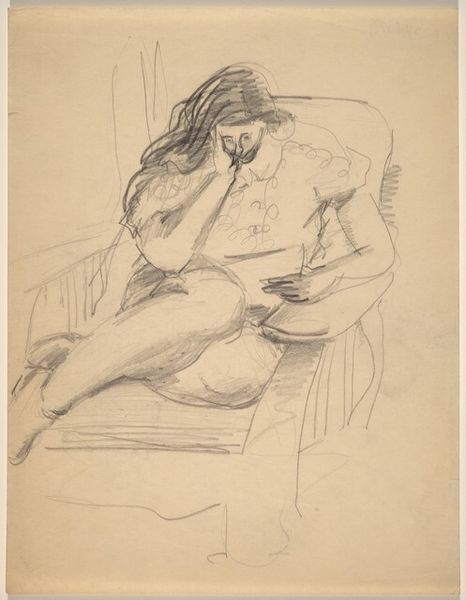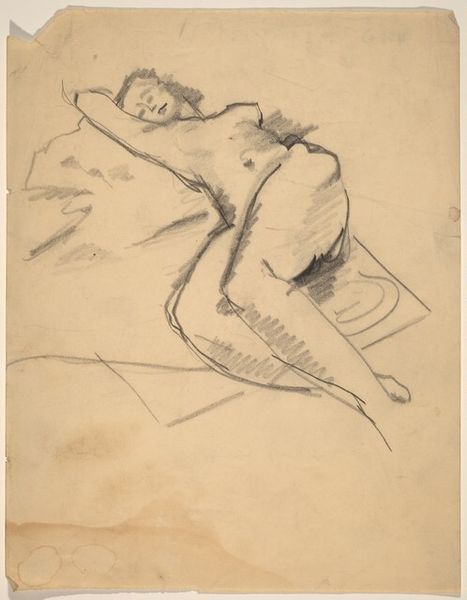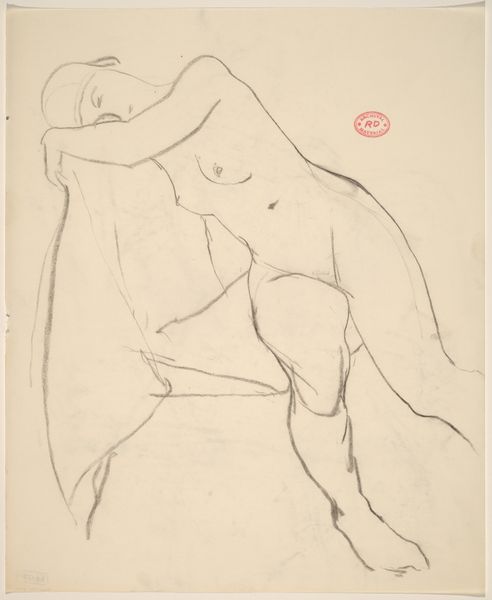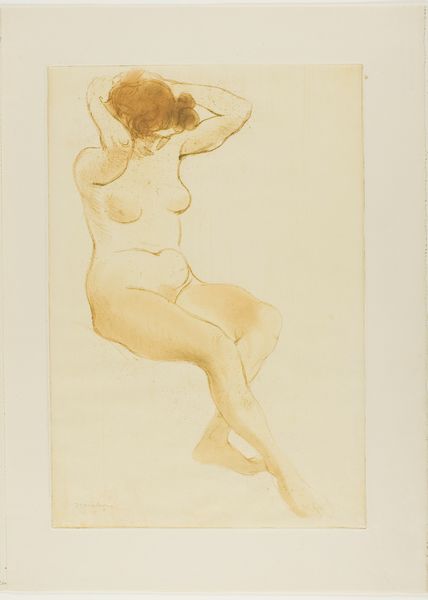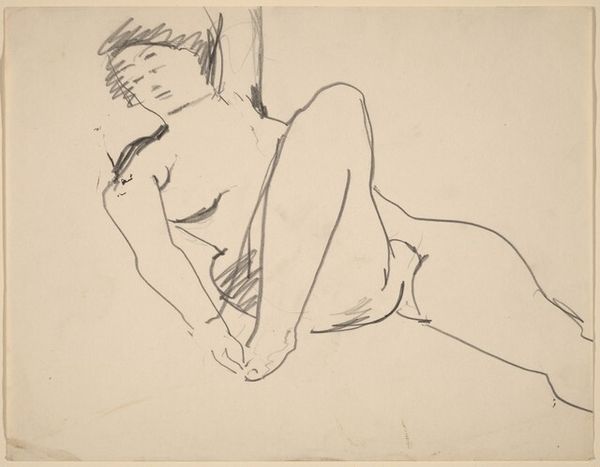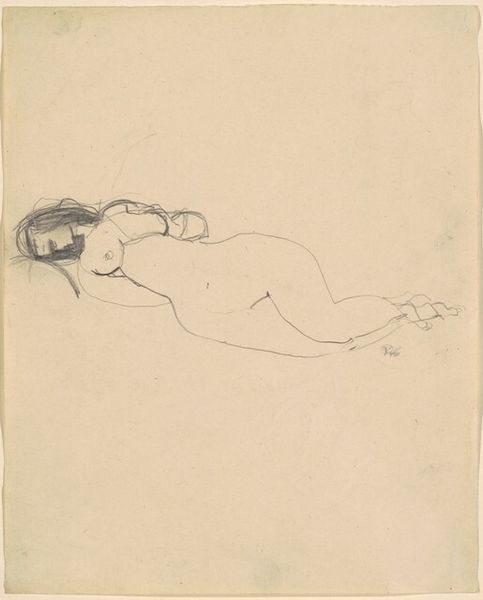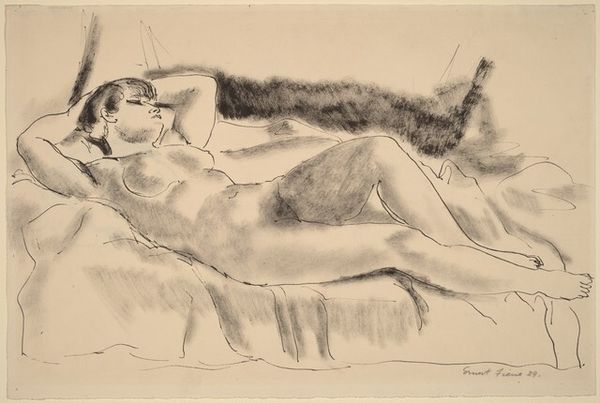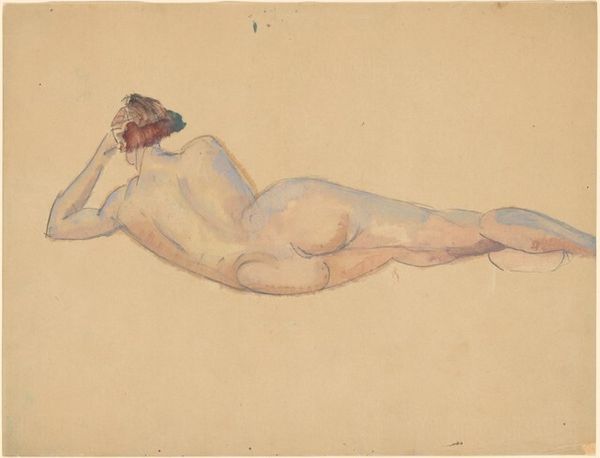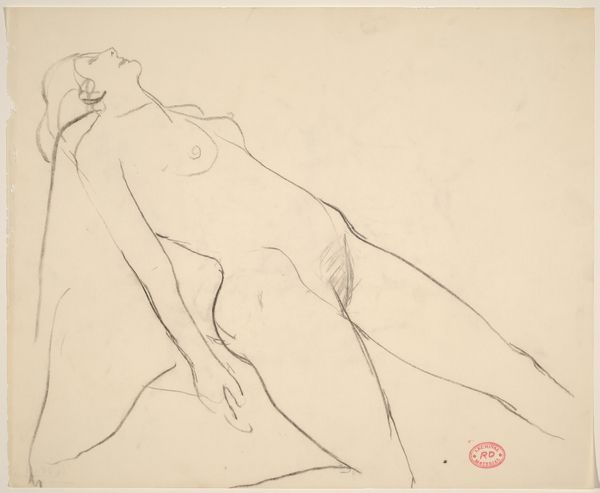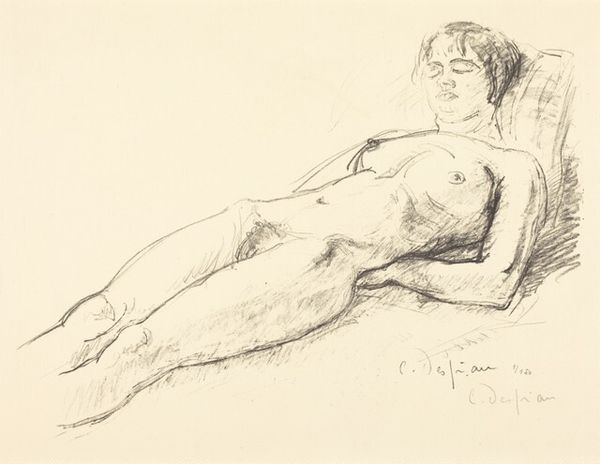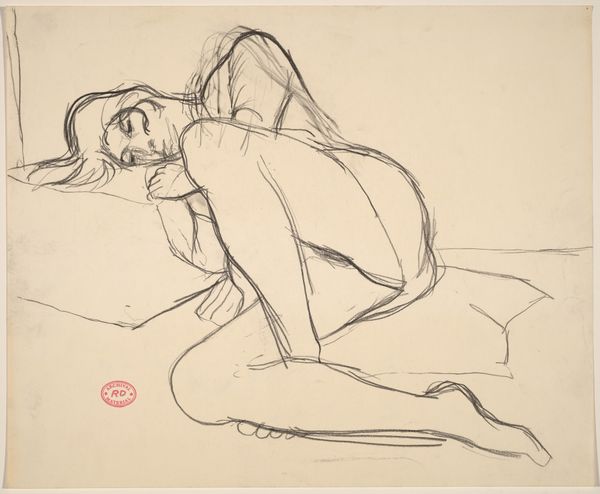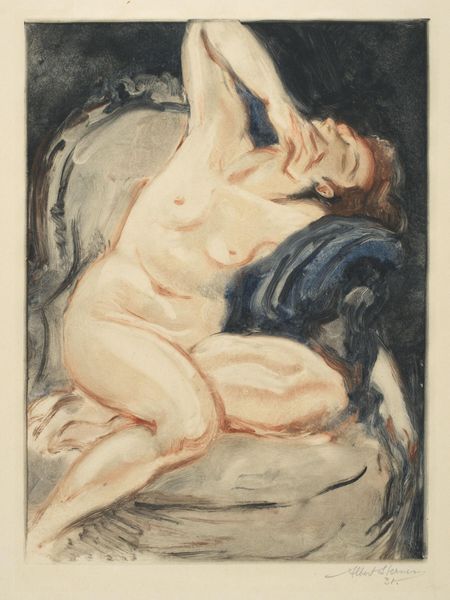
Dimensions: 280 mm (height) x 229 mm (width) (bladmaal)
Curator: Here we have "Reclining Female Model, Elvire" by Jules Pascin, created around 1910. It’s currently held here at the SMK, the National Gallery of Denmark. It’s a watercolor drawing. Editor: It's dreamlike. Ethereal even. The muted palette and the way the form sort of dissolves into the background give it this transient quality, like a memory. Curator: Pascin often focused on depicting women, particularly exploring themes of sexuality and identity within the bohemian circles of early 20th-century Paris. Think of it alongside works by his contemporaries like Modigliani and Picasso, reflecting on changing representations of the female figure. Editor: The lines are so fluid. Notice how Pascin uses color to define the planes of the body without resorting to hard edges? The subtle washes create form and depth. The slightly melancholic color, the blues, and greys also create form. Curator: The passivity in her pose seems at once compliant, reflective of her circumstances and position within this societal dynamic of observer and observed, yet there’s also an active gaze turned outwards, an act of confrontation. Does she invite or defy our attention? What is her narrative here? Editor: It's like she is sinking, dissolving into the surface behind her, barely held together by contour lines that are just confident enough to describe form, yet not bold enough to contain it. And then this happens in a medium like watercolor... it emphasizes how the material processes that define this image play into Pascin’s narrative intentions. Curator: I agree. And thinking about how watercolor has historically been associated with immediacy and intimacy further enhances this duality. It also makes you wonder about the gaze then...who it serves, and its ethical weight, in representing marginalized women. Editor: For me, the success of this composition, of the overall picture is owed to its compositional decisions and restrained palette. Curator: Right. I see that tension, formal and societal, that ultimately invites critical reevaluation of familiar representations. Editor: A study of light and shadow then, on a representational level, as well as in material terms.
Comments
No comments
Be the first to comment and join the conversation on the ultimate creative platform.

